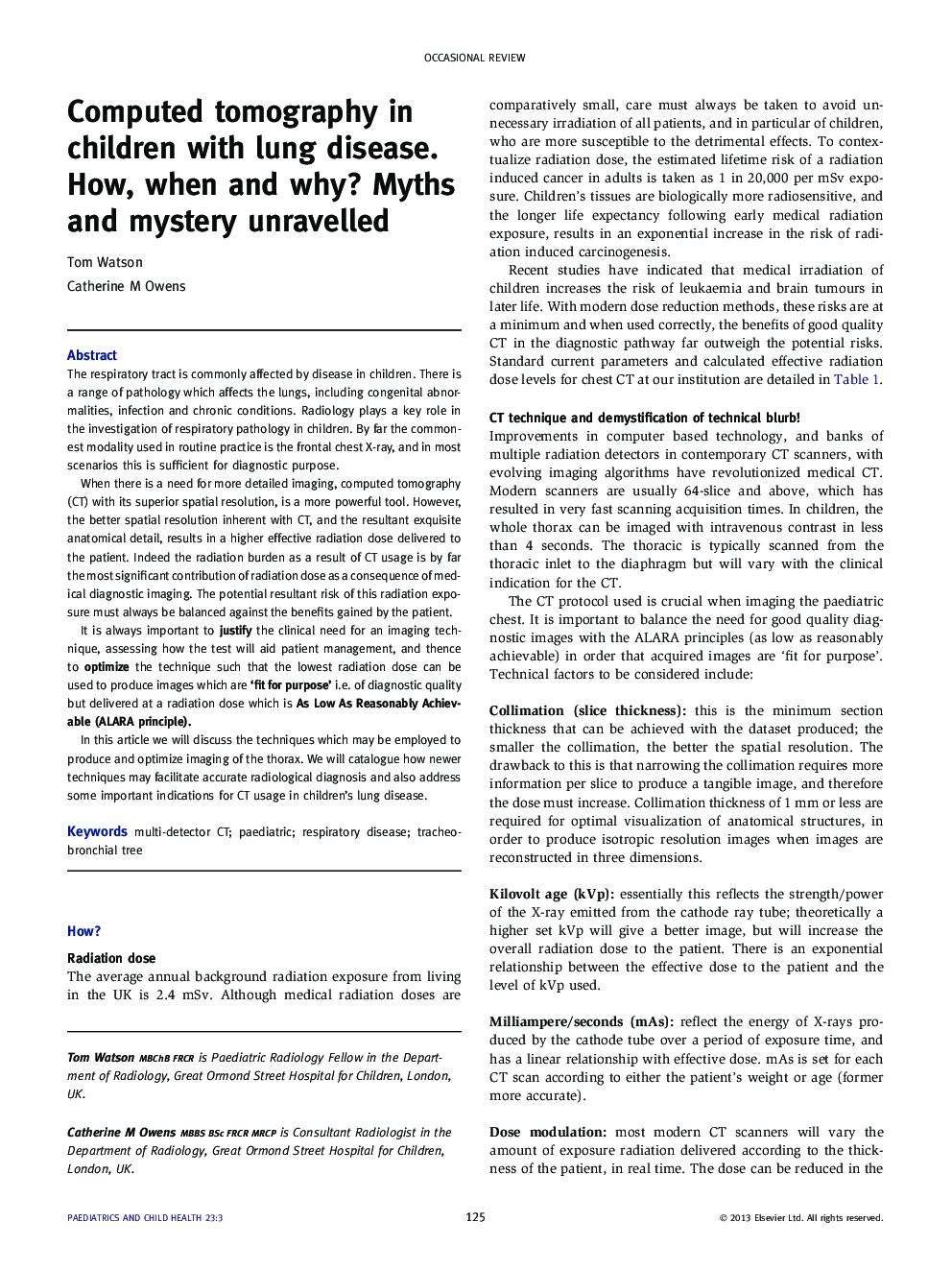| Article ID | Journal | Published Year | Pages | File Type |
|---|---|---|---|---|
| 4172279 | Paediatrics and Child Health | 2013 | 8 Pages |
The respiratory tract is commonly affected by disease in children. There is a range of pathology which affects the lungs, including congenital abnormalities, infection and chronic conditions. Radiology plays a key role in the investigation of respiratory pathology in children. By far the commonest modality used in routine practice is the frontal chest X-ray, and in most scenarios this is sufficient for diagnostic purpose.When there is a need for more detailed imaging, computed tomography (CT) with its superior spatial resolution, is a more powerful tool. However, the better spatial resolution inherent with CT, and the resultant exquisite anatomical detail, results in a higher effective radiation dose delivered to the patient. Indeed the radiation burden as a result of CT usage is by far the most significant contribution of radiation dose as a consequence of medical diagnostic imaging. The potential resultant risk of this radiation exposure must always be balanced against the benefits gained by the patient.It is always important to justify the clinical need for an imaging technique, assessing how the test will aid patient management, and thence to optimize the technique such that the lowest radiation dose can be used to produce images which are ‘fit for purpose’ i.e. of diagnostic quality but delivered at a radiation dose which is As Low As Reasonably Achievable (ALARA principle).In this article we will discuss the techniques which may be employed to produce and optimize imaging of the thorax. We will catalogue how newer techniques may facilitate accurate radiological diagnosis and also address some important indications for CT usage in children's lung disease.
